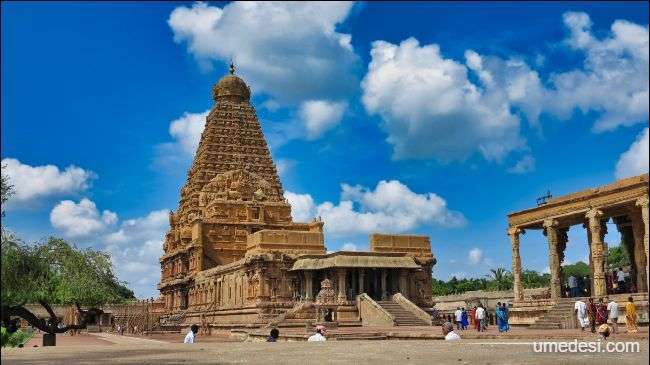
Built by the ambitious Chola king Raja Raja Chola I in 1010 AD, this temple isn’t just big; it’s extraordinary. It tells the story of an empire at its zenith, blending spirituality, art, and engineering brilliance into one awe-inspiring structure.
Nestled in Thanjavur, Tamil Nadu, this UNESCO World Heritage Site is a treasure trove of history and culture. Let’s explore why this temple still leaves visitors speechless.
At the very top of the vimana sits a single granite round stone weighing 80 tons
2. Raja Raja Chola’s Dream: Building a Temple for the Ages
What do you do when your empire is thriving and you want the world to remember it? If you’re Raja Raja Chola I, you build a temple that defies imagination.
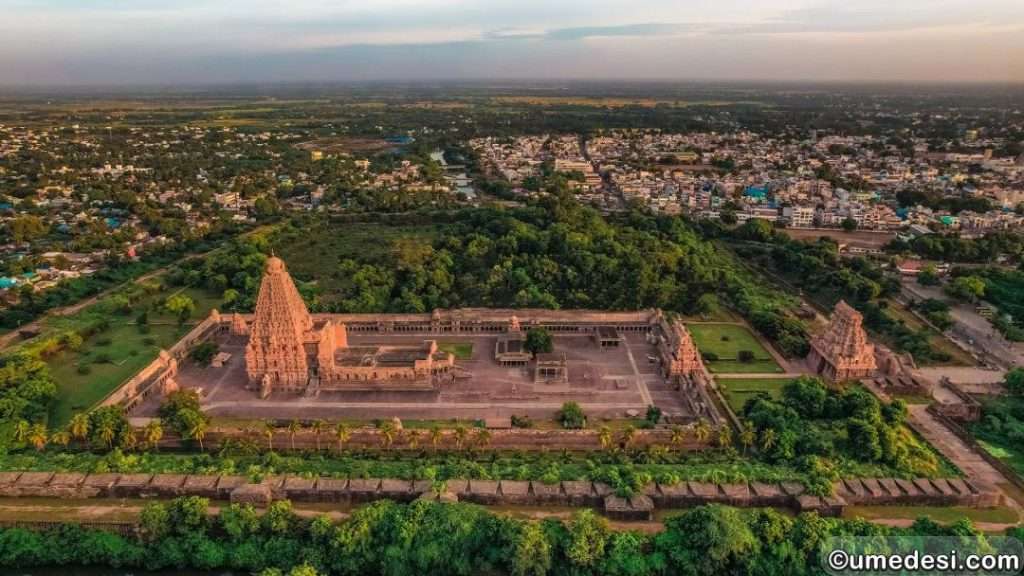
In just seven years, thousands of artisans and workers brought his vision to life. The temple wasn’t just a place of worship—it was a statement. It symbolized the Chola dynasty’s power, wealth, and devotion to Lord Shiva.
Even today, Brihadeeswara Temple stands tall as a reminder of an era when Tamil culture and architecture reached their peak.
The temple’s 216-foot vimana (tower) never casts a shadow on the ground at noon.
3. What Makes This Temple So Unique?
This isn’t your ordinary temple. Here are just a few reasons why it’s so special:
- The Tower That Defies Shadows: The temple’s 216-foot vimana (tower) never casts a shadow on the ground at noon. Yes, you read that right. How did they do it? The Cholas’ mastery of geometry and astronomy might hold the answer.
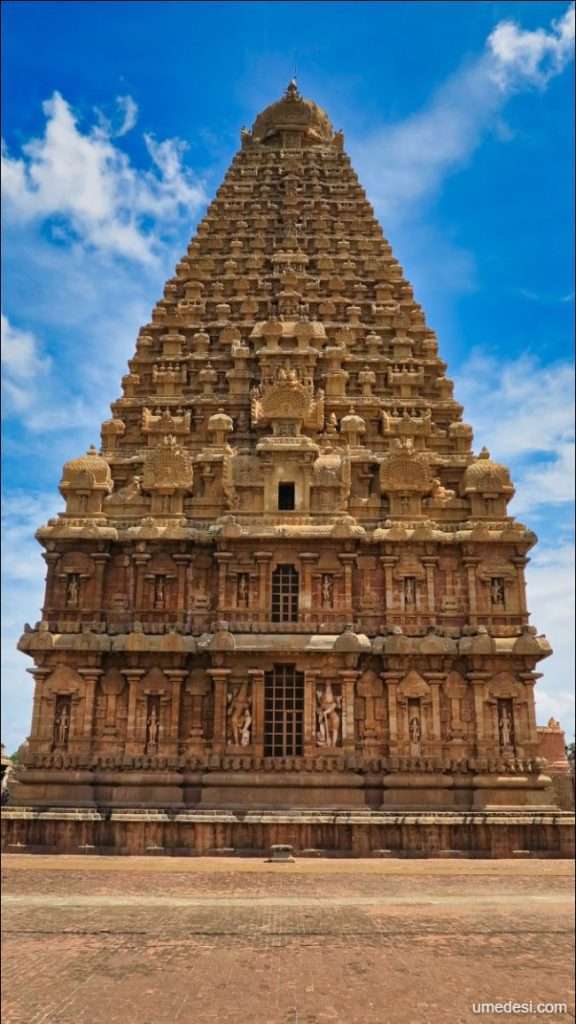
- The 80-Ton Mystery: At the very top of the vimana sits a single granite round stone weighing 80 tons. Theories abound on how it was placed there, including the use of a massive ramp stretching for miles.
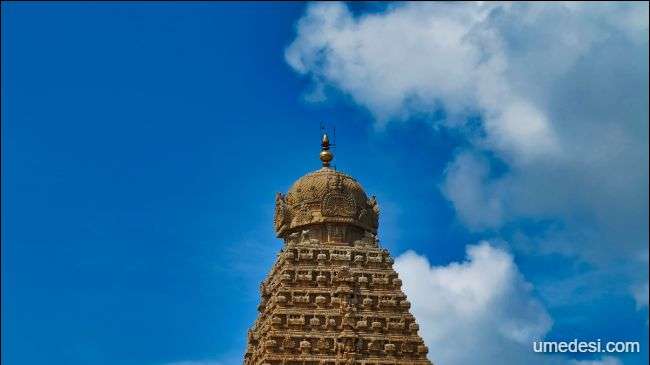
- The Loyal Guardian: The Nandi statue, carved from a single granite block, measures 16 feet long and 13 feet high. It’s one of the largest Nandi statues in India and faces the sanctum sanctorum, symbolizing devotion to Lord Shiva.
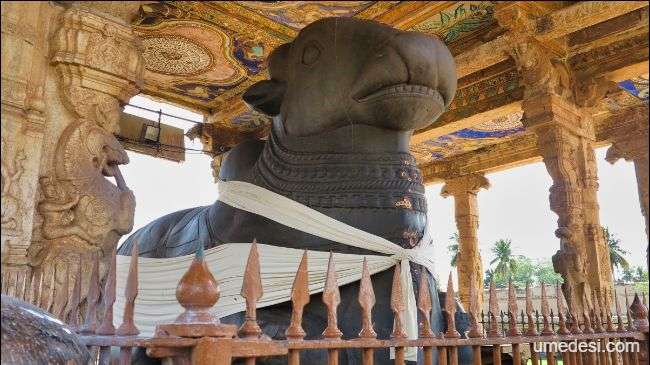
Each of these features isn’t just an architectural feat; it’s a glimpse into the brilliance of the Chola dynasty.
4. More Than Stone and Sculpture: The Spiritual Side
This temple isn’t just about its grandeur; it’s about devotion. Dedicated to Lord Shiva, it reflects the spiritual depth of Tamil culture.
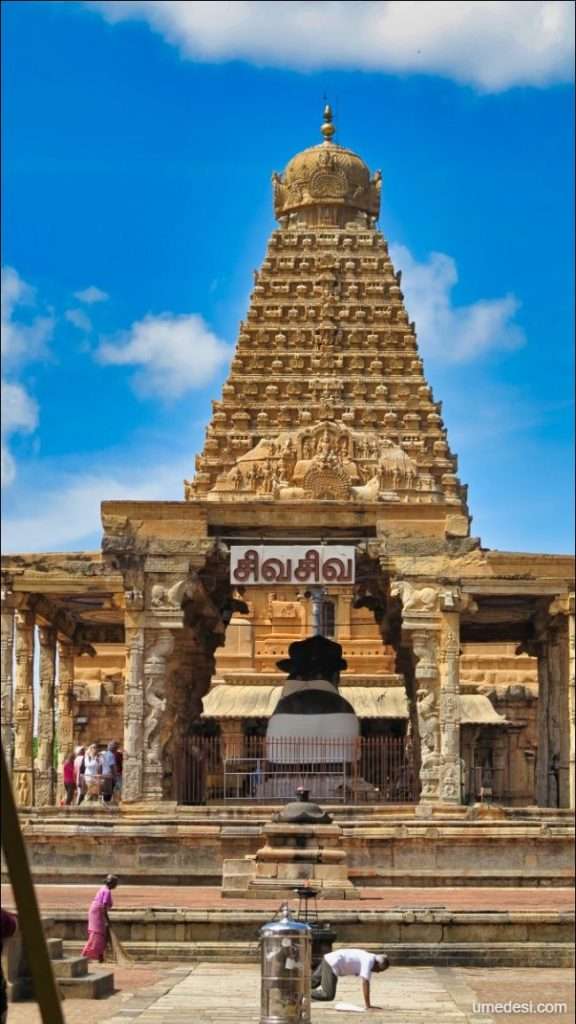
The Nandi statue isn’t just a decoration—it’s a gatekeeper, a protector, and a symbol of loyalty. Visitors often pause here first to seek blessings before entering the sanctum.
The temple also comes alive during festivals like Maha Shivaratri when thousands gather to celebrate and connect with the divine.
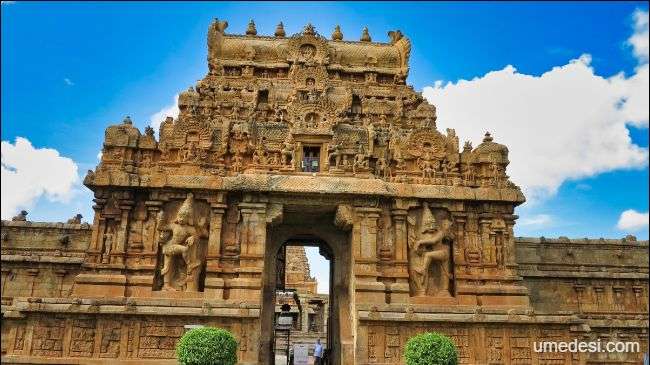
5. A World Heritage Site for All the Right Reasons
Brihadeeswara Temple earned its UNESCO World Heritage status not just for its beauty but for what it represents. It’s a masterpiece of engineering, a cultural landmark, and a living testament to the Cholas’ vision.
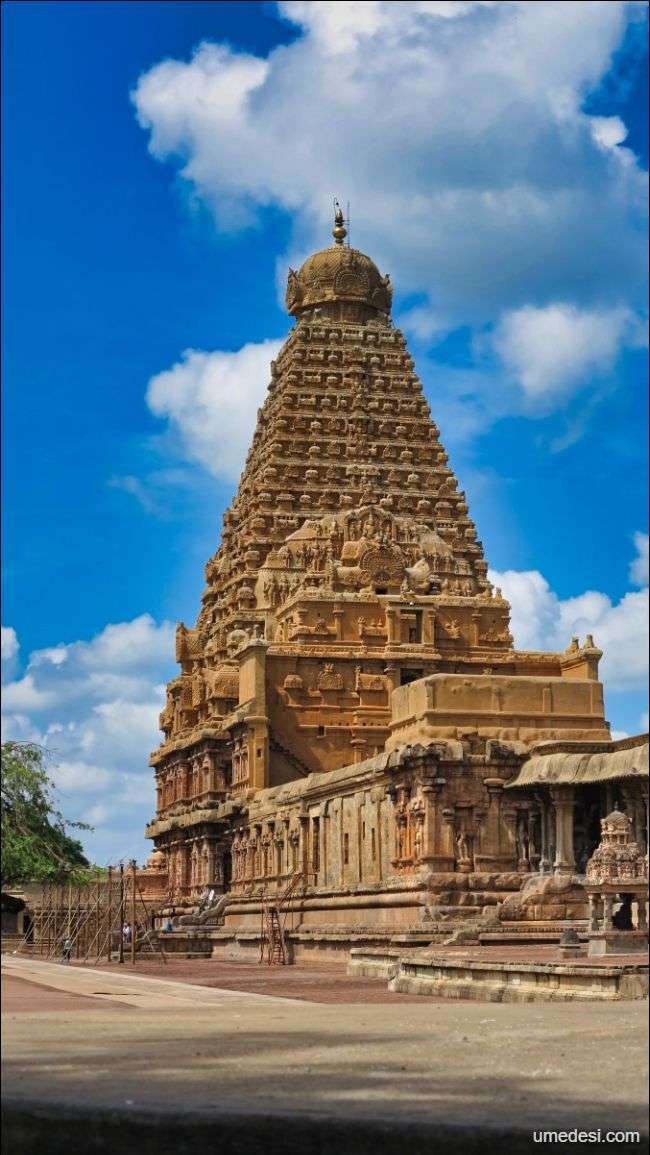
Despite being over 1,000 years old, the temple remains an active place of worship. It has weathered centuries of challenges—from invasions to natural disasters—yet stands proud, as majestic as ever.
6. Planning Your Visit? Here’s What to Know

If this temple is now on your bucket list (and it should be!), here’s how to make the most of your visit:
- Where: Thanjavur, Tamil Nadu, India.
- When to Visit: November to February is the best time to explore comfortably.
- Nearby Attractions: Don’t miss Gangaikonda Cholapuram, another Chola-era marvel.
Check here for more information!
7. Why This Temple Stays in Your Heart
Visiting Brihadeeswara Temple isn’t just a trip; it’s an experience. You’ll leave with more than just photos—you’ll take home a sense of wonder at what humans can achieve when art, science, and faith come together.
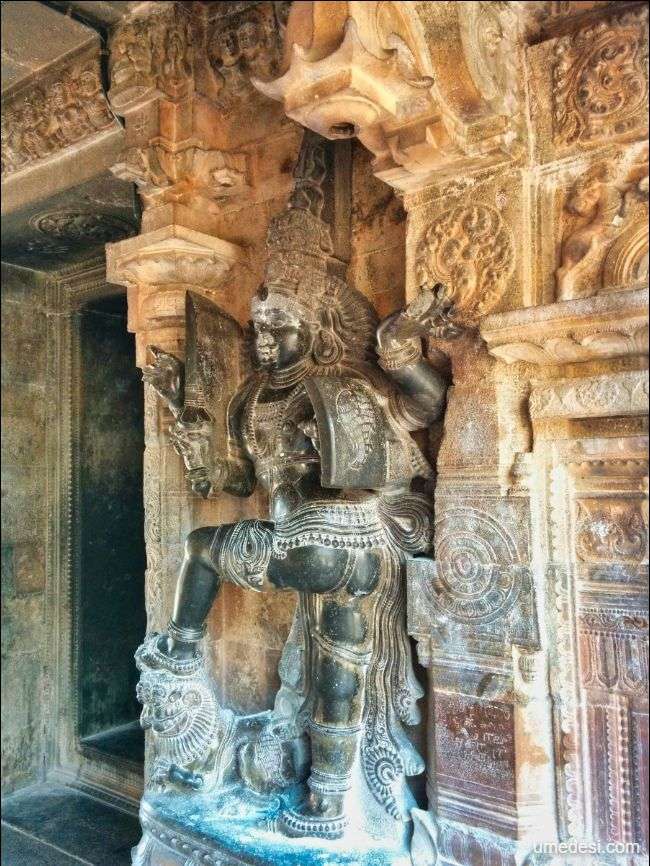
This is more than a UNESCO site; it’s a living, breathing piece of history that reminds us of the Chola dynasty’s enduring legacy.
FAQs About Brihadeeswara Temple
1. What makes Brihadeeswara Temple special?
Its 216-foot vimana, shadow less design, and massive Nandi statue are architectural feats that have amazed visitors for centuries.
2. Who built the temple?
Raja Raja Chola I built the temple in 1010 AD as a symbol of his devotion to Lord Shiva and the Chola dynasty’s power.
3. How did they place the 80-ton stone on the vimana?
Theories suggest a ramp system stretching for miles was used, but the exact method remains a mystery.
4. Why is Nandi important in Shiva temples?
Nandi symbolizes loyalty and devotion and serves as Lord Shiva’s gatekeeper.
5. Is there an entry fee to visit?
No, entry is free, though donations are welcomed.
6. What’s the best time to visit the temple?
The winter months (November to February) offer pleasant weather for exploring.
7. Are there other Chola-era temples nearby?
Yes! Don’t miss Gangaikonda Cholapuram and Airavatesvara Temple, both UNESCO sites.
